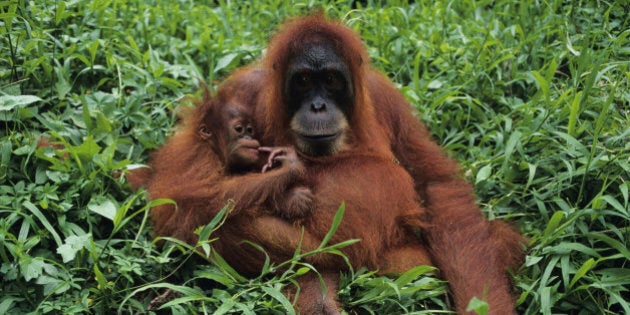
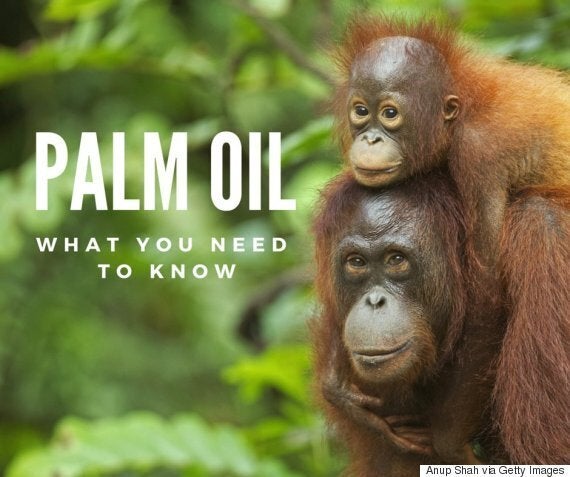
The first thing that comes to mind when someone mentions palm oil is orangutans. We all say it: “Palm oil is so bad for orangutans.” And it’s true, but there’s also a lot that many of us don’t know about palm oil.
What about the other animals affected by palm oil production? What products contain palm oil and why is it so widely used in the first place? And, most importantly, how can we avoid it and how can we help the problem?
What It Is
“Palm oil is a vegetable oil that’s produced from the palm oil crop and is produced mainly in southeast Asia, particularly in Indonesia and Malaysia,” Lain Pin Koh, Associate Professor and Chair of the Applied Ecology and Conservation group at the University of Adelaide, told The Huffington Post Australia.
Why It's Used
“It’s one of the most high-yielding crops in the world and because it’s so productive, they can produce palm oil at a low cost,” Koh said.
This is a sentiment accredited practising dietician Caroline Trickey agrees with.
“The reason food manufacturers like palm oil is because it’s very, very cheap,” Trickey said.
“Because of the high saturated fat content, it’s a more stable oil. So products with palm oil will be more shelf stable and less likely to go off, especially when it’s hot for long periods of time.
“Palm oil can also give food products the consistency and texture of when you bake with butter -- the same flakiness.”
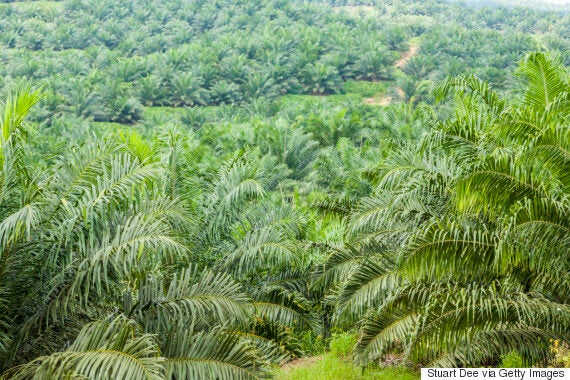
Forests are completely cleared to be converted into palm plantations like these.
What Products Palm Oil Is Found In
“It's used in a huge range of products -- in fact, pretty much everything you pick up from the supermarket shelf would contain palm oil in one form or another,” Koh said.
“For example, junk food -- instant noodles have lots of palm oil in it, as well as confectionery items like biscuits, Kit-Kats and all other food products that require some kind of vegetable shortening.”
If that isn't unsettling enough, palm oil is also found in everyday household products and cosmetics.
“It’s also found in non-edible products, such as shampoo, soap, cleaning products, facial creams and other body lotion,” Koh said.
Environmental Impacts
“Over the last 40 or 50 years, a huge part of rainforest in Indonesia and Malaysia has been converted into oil plantations. In doing so, plantation companies are destroying the natural habitat or homes of many wildlife species in those countries, and that’s driving the decline into extinction. It’s still happening today, particularly in some parts of Indonesia,” Koh told HuffPost Australia.
It’s not just orangutans that are affected by palm oil productions.
“Orangutans are the most known species that has been impacted by palm oil agriculture but there are lots of other species, such as birds,” Koh said. “The plantations are also inhospitable to many insect species, including many species of butterfly.”
Other endangered species include the pygmy elephant, Sumatran tiger, Asian rhinoceros, sun bear, clouded leopard and many more.
“A while ago I did a study in Sabah, a Malaysian part of Borneo, and we were able to show that once you cut down a forest and convert that to palm oil plantations, you remove about 70 percent of the native wildlife species -- from insects to mammals to birds to reptiles.”
Palm oil production also causes haze, a huge ongoing problem in parts of Asia, which is caused by burning rainforest to make room for palm plantations.
“These days a lot of tension has been focused on not only the impacts on wildlife and forests, but also how the burning of the forest to clear the way for palm oil has resulted in a huge haze problem,” Koh told HuffPost Australia. “These haze blankets is a recurring issue that happens in southeast Asia.”
The reason farmers are resorting to fire is because it’s the cheapest way to clear land for palm oil plantations.
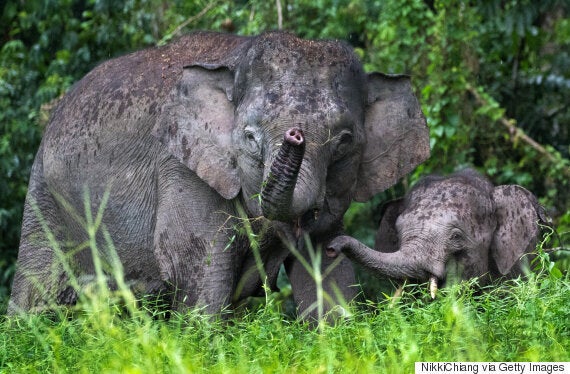
These adorable pygmy elephants are just one of the many species endangered as a result of palm oil production.
Health Impacts
Palm oil isn’t just detrimental to animals and the environment -- it’s bad for us, too.
“I would say it is an unhealthy oil for us to eat,” accredited practising dietician Caroline Trickey told HuffPost Australia.
Palm oil is high in saturated fat, which is thought to be associated with an increased risk of cardiovascular disease. While there is debate surrounding whether or not saturated fat is bad, the issue which still remains is the unhealthy products in which palm oil is found.
“It’s not so much that people cook with palm oil -- very few people cook with palm oil -- it’s really because of the foods you find palm oil in that are unhealthy, like biscuits, chips. Just processed food,” Trickey said.
“When you look at this type of saturated fat, you’re looking at processed foods and often it is the combination of the fat and the fact that most of these foods are high GI.”
According to Trickey, this combination is an issue because these foods encourage inflammation inside the body, and inflammation encourages cardiovascular disease.
If you’re feeling completely overwhelmed and upset about the environmental harm palm oil causes, we are, too. And although it seems impossible to avoid palm oil and not contribute to this environmental misfortune, there are steps we can take to reduce our palm oil consumption.
Solution
“There have been a lot of efforts by different stakeholders to come up with a solution," Koh said. "There is an international forum called Roundtable on Sustainable Palm Oil (RSPO) and is where palm oil companies, the conservations groups, the government agencies and the retailers all come together every year to develop solutions."
“One of the most promising solutions they have developed is a certification to certify plantations that have a higher standard of producing palm oil.
“To become certified you have to abide by strict regulations with regards to how the environmental impacts are minimised and how the local communities are compensated or protected from the industry.”
However, the certification doesn’t necessarily mean much for us in Australia because retailers and food manufacturers are not required to label foods which contain palm oil.
“That’s exactly the problem. Retailers are not required to label palm oil and if it’s just called ‘vegetable oil’, then it’s very hard to know which products not to purchase,” Koh said.
“So people see ‘vegetable oil’ on a product and think it’s healthy or don’t realise that it could be palm oil,” Trickey said.
It also doesn’t help that there are over 200 alternate names for palm oil -- you might recognise ‘sodium laureth sulphate’, which is in pretty much every product that foams, from shampoo to cleaning agents.
“When the labelling becomes mandatory, it will be easier for consumers to identify products that are made with sustainable palm oil,” Koh said.
“There is definitely a lot of room for improvement in terms of what the industry can do.”
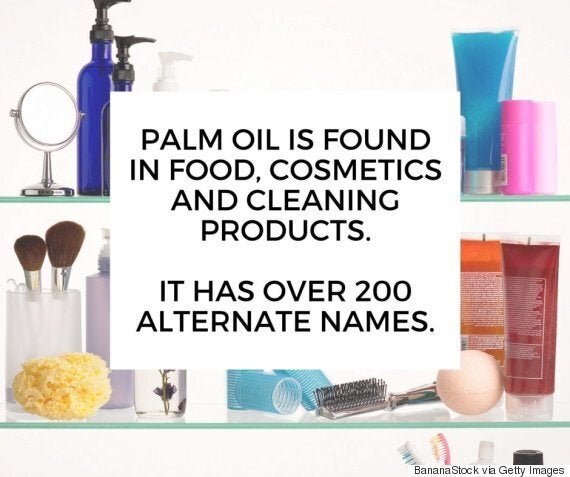
What Can We Do
“I think it would be hard to avoid palm oil altogether because it’s just everywhere,” Koh said. “The next best thing we could do is be selective and only buy products that contain sustainable palm oil. Look for the certification label on products.”
How To Tell If Food contains palm oil (the golden rule)
To avoid food products containing palm oil, there is one golden rule to remember. Tell your friends, your family, tell everybody you know about it.
“The way I work out if it’s got palm oil in it or not is, first, knowing that palm oil has roughly 50 percent saturated fat,” Trickey said.
“Then look at the total fat and total saturated fat in the nutritional information panel -- if the saturated fat is roughly half of what the total fat is, then you can be pretty well sure that it’s palm oil in there.
“Most other polyunsaturated fats, like sunflower oil, have much less saturated fat, around 11 percent saturated fat. Canola oil is around nine percent.”
If enough of us avoid palm oil products (and pressure companies to label palm oil), we may get closer to a solution.
“If people start to send queries and emails to food and cleaning product manufacturers for products where you can’t clearly see if the product contains palm oil, then they are going to go to the effort of putting it on the front of their pack,” Trickey said.
“The main thing is that consumers drive information like that on packaging -- you can sway the producers with your dollar.”